Graptopetalum Paraguayense (Ghost Plant) Profile
Written by Iris
Oct 22 2021
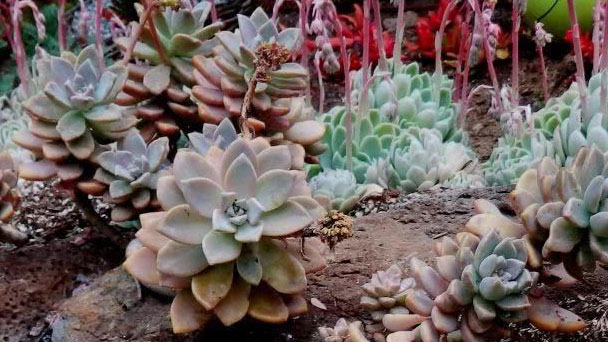
Graptopetalum Paraguayense, also called the Ghost Plant, is a beautiful succulent with purple-gray leaves and sprawling stems. Graptopetalum Paraguayense is native to Mexico, and plant care involves plenty of sunlight and infrequent watering to keep them happy. The leaves of the Graptopetalum Paraguayense have a delicate white powdery coating called pruinose, giving it a soft "ghost" appearance.
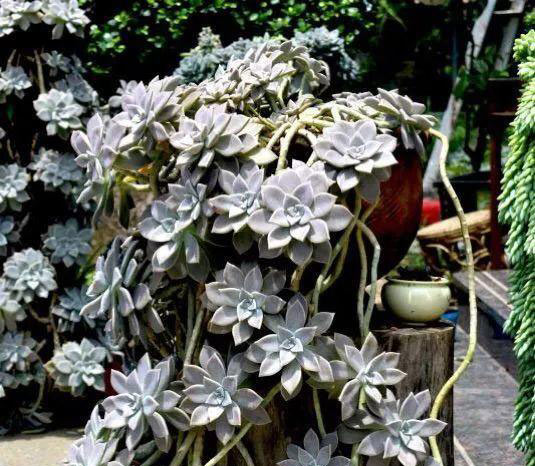
Native to Mexico, this low-growing succulent can get between 6 inches and 1 foot tall and grows in clumps that are 14 to 20 inches wide, making it useful as a groundcover in areas with no foot traffic. But its sprawling nature also allows it to drape over containers or walls. The hardy ghost plant can be grown throughout the state, handling temperatures as low as 10° Fahrenheit.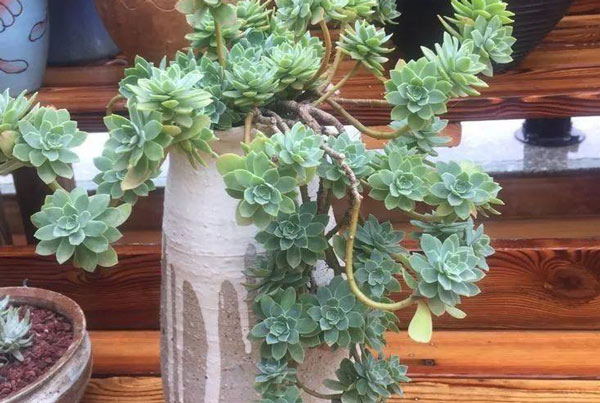

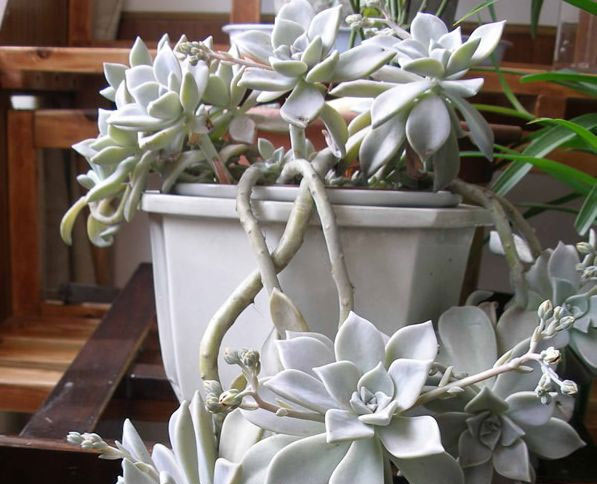
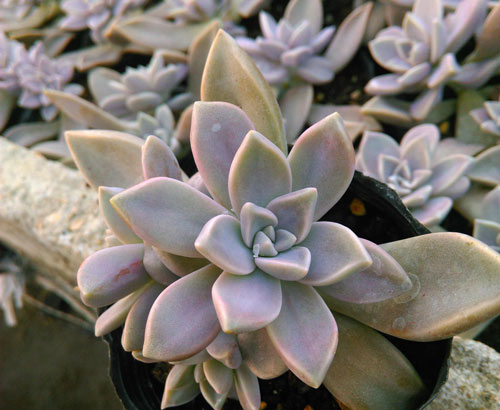
Kalanchoe luciae (Paddle Plant)
Sempervivum (Hens and Chicks)
Sedum nussbaumerianum (Stonecrop)
Read Next: Graptopetalum Paraguayense Grow & Care Guide
Graptopetalum Paraguayense PictureGraptopetalum Paraguayense InfoGraptopetalum Paraguayense Native HabitsGraptopetalum Paraguayense DstributionHow to Grow & Care for Graptopetalum ParaguayenseHow to Grow Graptopetalum ParaguayenseHow to Care for Graptopetalum ParaguayenseGraptopetalum Paraguayense UsesGraptopetalum Paraguayense Common Pests/DiseasesGraptopetalum Paraguayense Design TipsGraptopetalum Paraguayense Companion Plants
Graptopetalum Paraguayense Picture

Graptopetalum Paraguayense Info
| Botanical Name | Graptopetalum paraguayense |
| Common Name | Ghost Plant, mother-of-pearl plant |
| Plant Type | Perennial succulent |
| Mature Size | Six to 12 inches tall; 20 inches wide |
| Sun Exposure | Full to partial sun |
| Soil Type | Sandy or a light potting mix |
| Soil pH | 6.1-7.8 |
| Bloom Time | Spring |
Graptopetalum Paraguayense Native Habits
A powdery coating called pruinose covers this plant's leaves, giving them their ghostly look. This coating is delicate and can be damaged by handling. Fleshy, pointed leaves grow along brittle, trailing stems and form rosettes ranging in color from pale blue gray (in bright shade) to yellow pink (in full hot sun). In mid-spring, star-shaped white flowers marked with red rise up on flower stalks.Native to Mexico, this low-growing succulent can get between 6 inches and 1 foot tall and grows in clumps that are 14 to 20 inches wide, making it useful as a groundcover in areas with no foot traffic. But its sprawling nature also allows it to drape over containers or walls. The hardy ghost plant can be grown throughout the state, handling temperatures as low as 10° Fahrenheit.

Graptopetalum Paraguayense Dstribution
It is a succulent plant from Mexico that was improved upon as an edible crop. Graptopetalum Paraguayense is also known as a gardening plant called oborozuki. Ghost plant is new to Japan and it is called Gurapara leaf in Japanese.How to Grow & Care for Graptopetalum Paraguayense
How to Grow Graptopetalum Paraguayense
- With Seeds
- With Stem Cuttings
- With Leaf Cuttings
- With Offsets

How to Care for Graptopetalum Paraguayense
- Light
- Soil
- Water
- Temperature and Humidity
- Fertilizer
- Pruning

Graptopetalum Paraguayense Uses
- Nutritional Value
- Landscape Uses
Graptopetalum Paraguayense Common Pests/Diseases
Graptopetalum Paraguayense grows, remove dead leaves at the base of the plant. Decomposing leaves provide a habitat for pests like the mealybug. If your Graptopetalum Paraguayense has mealybugs, you can spot treat with a dab of isopropyl alcohol, or smother them with horticultural oil.
Graptopetalum Paraguayense Design Tips
Graptopetalum Paraguayense is excellent in containers, requiring only infrequent watering. Graptopetalum Paraguayense also makes an interesting ground cover and accent plant in cactus, succulent and xeriscape gardens. Graptopetalum Paraguayense should be located in a somewhat protected area as the succulent leaves are easily broken off and form new plants.Graptopetalum Paraguayense Companion Plants
Senecio mandraliscae (Blue Chalksticks)Kalanchoe luciae (Paddle Plant)
Sempervivum (Hens and Chicks)
Sedum nussbaumerianum (Stonecrop)
Read Next: Graptopetalum Paraguayense Grow & Care Guide
Latest Updated
- Benefits of Bugleweed - 7 Science-backed Health Benefits
- Bugleweed Dangers & Side Effects - Is It Poisonous?
- How to Plant Evergreen Trees - What You Should Know
- When to Plant Evergreens - Grow Guide for Evergreen Trees
- 12 Wonderful Evergreen Shrubs for Your Garden
- 12 Popular Evergreen Plants with Pictures for Beginners
- When And How To Prune A Lilac Bush Like a Pro
- How to Grow & Care for Lilac Vine (Hardenbergia Violacea)
- Japanese Lilac Tree (Syringa Reticulata) Care & Propagation Guide
- Shumard Oak Pros and Cons - What to Know
Popular Articles
- Winter maintenance of Antirrhinum Majus
- How to Grow Terminalia Mantaly Tree
- How to Grow and Care for Crossostephium Chinense
- How to grow Antirrhinum Majus in spring
- Peristeria Elata (Dove Orchid) Profile: Info & Care Guide
- Underwatered Snake Plant (Sansevieria Trifasciata) - Signs And How To Fix
- How to Care for Brazilian Jasmine Plant (Mandevilla Sanderi)
- How to Grow & Care for Graptopetalum Purple Delight in Summer
- Rosa Chinensis (China Rose): Plant Growing & Care Tips
- How to Care for Baby Sun Rose (Aptenia Cordifolia)